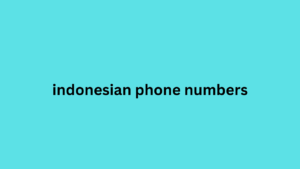Email marketing is spam
Posted: Sun Dec 22, 2024 10:01 am
This is one of the main confusions that exist within the world of email marketing and the difference between both concepts must be made clear.
What is spam?
Corned beef.
Yes, it's canned meat, but it's also what we know as spam .
We can define it as the sending of mass emails to users who have not given their permission to receive them.
And how did we get that name?
From a Monty Python sketch.
In this one, a couple went to a restaurant and all the dishes on the menu had spam, the canned meat.
There was no way to get rid of him.
Years later, Brad Templeton called the arrival of spam by that name, in a nod to the Monty Python sketch.
What is email marketing?
It is the mass sending of emails to a group of contacts who have given their permission to receive said emails.
Spam, thanks to the antispam filters of our email clients, indonesian phone numbers usually ends up in the junk mail folder, while mailings, thanks to our email marketing tool, end up in the inbox.
Spam is the indiscriminate sending of emails for purely advertising purposes.
Mass mailing is segmented and directed at a specific target that is interested in the campaign they will receive.
So we should not confuse the two concepts.

If I haven't confirmed my subscription it's spam.
Yes, I have agreed to receive email marketing and I can stop receiving them at any time by clicking the unsubscribe link, which always appears in the newsletters.
3.- Email marketing is not effective (nobody reads the emails)
We have heard many times that emails accumulate in users' inboxes and go straight to the trash without being read.
According to Amdia, 60% of users receive less than six emails a day from their trusted brands and of this 60%, 40% receive less than three messages a day.
So this idea that users are saturated with emails and cannot read them all is false.
Email marketing is one of the most effective channels, as demonstrated by data provided by DMA, which states that email marketing has the highest conversion rate (66%) compared to other forms of marketing.
Users receive emails from brands and companies they trust, so they don't hesitate to open and read the newsletters.
Emailing has the advantage that it is an asynchronous channel, we do not need to read the email when it arrives, we can wait to do so when we have time.
Throughout 2017, Mailify conducted a study with data from more than 90,000 companies and observed that more than 50% of users who open a campaign keep it open for more than 10 seconds, meaning they pay attention to reading them.
What is spam?
Corned beef.
Yes, it's canned meat, but it's also what we know as spam .
We can define it as the sending of mass emails to users who have not given their permission to receive them.
And how did we get that name?
From a Monty Python sketch.
In this one, a couple went to a restaurant and all the dishes on the menu had spam, the canned meat.
There was no way to get rid of him.
Years later, Brad Templeton called the arrival of spam by that name, in a nod to the Monty Python sketch.
What is email marketing?
It is the mass sending of emails to a group of contacts who have given their permission to receive said emails.
Spam, thanks to the antispam filters of our email clients, indonesian phone numbers usually ends up in the junk mail folder, while mailings, thanks to our email marketing tool, end up in the inbox.
Spam is the indiscriminate sending of emails for purely advertising purposes.
Mass mailing is segmented and directed at a specific target that is interested in the campaign they will receive.
So we should not confuse the two concepts.

If I haven't confirmed my subscription it's spam.
Yes, I have agreed to receive email marketing and I can stop receiving them at any time by clicking the unsubscribe link, which always appears in the newsletters.
3.- Email marketing is not effective (nobody reads the emails)
We have heard many times that emails accumulate in users' inboxes and go straight to the trash without being read.
According to Amdia, 60% of users receive less than six emails a day from their trusted brands and of this 60%, 40% receive less than three messages a day.
So this idea that users are saturated with emails and cannot read them all is false.
Email marketing is one of the most effective channels, as demonstrated by data provided by DMA, which states that email marketing has the highest conversion rate (66%) compared to other forms of marketing.
Users receive emails from brands and companies they trust, so they don't hesitate to open and read the newsletters.
Emailing has the advantage that it is an asynchronous channel, we do not need to read the email when it arrives, we can wait to do so when we have time.
Throughout 2017, Mailify conducted a study with data from more than 90,000 companies and observed that more than 50% of users who open a campaign keep it open for more than 10 seconds, meaning they pay attention to reading them.